[Our comics coverage has spanned much of the globe, but one region has remained unexplored by the Journey…until now. With this article, we welcome Erica Friedman to the ranks of the Journey's associates!]
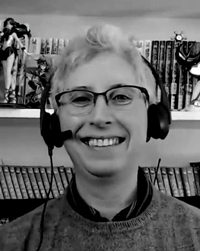
by Erica Friedman
If you joined us for the Journey Show last October, you were able to learn about the newest popular TV medium coming from Japan. Japanese cartoons are making their mark with themes of nature versus man's drive to develop technology, frequently exploring what truly makes us human…and some lucky American viewers have already had a chance to see some of these cartoons on television. But what you may not know, is that many of these cartoons were already popular in Japan in the form of comics which are called "manga."
What are Japanese Manga?
"Manga" is a word that means "loose drawing," i.e., a sketched image. The word manga was coined in the late 18th century, but the painter Hokusai made it famous with his sketchbooks, Hokusai Manga, which were first published in 1814.The British Museum goes so far as to ask if maybe Hokusai himself is the father of manga, but I think it is a bit much to assume that no other artists before him ever did a sketch, don't you think?
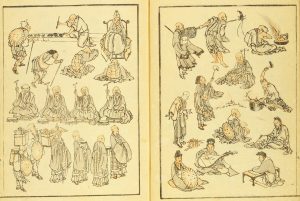
Japanese comics really took off after the war. One of the first truly breakout manga was Shin Takarajima (New Treasure Island) by Osamu Tezuka, based on Robert Louis Stevenson's rollicking tale. Published in 1947, this comic launched a new age of comics in Japan. You might also recognize Mr. Tezuka's name from our conversation about Japanese cartoons. Mr. Tezuka is a very busy and successful creator and his name will come up again and again as we talk.

Magazines Full Of Comics
When we think of comics, probably what comes to mind first is superheroes like Batman and Superman. One of the things that makes Japanese comics unique is – like comics here before the Comics Code – there are manga for all ages and sexes. Not only are there comics for girls and boys, even adults read manga. Whole magazines that are nothing but serialized comics stories are sold in Japan. People can even rent a magazine for a few cents, then return it, just like a library. Imagine a magazine where you could get the latest issue of all your favorite superheroes at once. These manga magazines in Japan are targeted to different ages and sexes, but its pretty easy to tell who reads which magazines.
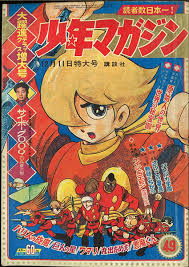
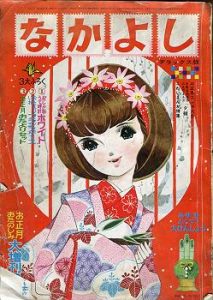
Here's an interesting question for you to ponder. Of these two magazines, which one had a comic by Mr. Tezuka running in it? You might be tempted to answer the top one, Shoten Magazine, because Mr. Tezuka's comics seem to be about robot boys and other adventures. You probably can guess where I'm going with this…Mr. Tezuka's comic Princess Knight runs in the girl's magazine, Nakayoshi. And that's just one of the amazing things about these magazines. You might see a comic by our Mr. Tezuka in a magazine for girls or boys or adults. Because he and Mr. Ishinomori are are so prolific, you might see them both in multiple magazines at the same time.
Just as we have comic strips in our newspapers, Japanese newspapers have comic strips, too. They are read from top to bottom, but like Nancy and Blondie in any American paper, the average Japanese mom or pop can read the daily adventures of Mrs. Sazae, an award-winning comic by Miss Michiko Hasegawa. This comic has been one of the most popular series in all of Japan since it was first published in 1946.
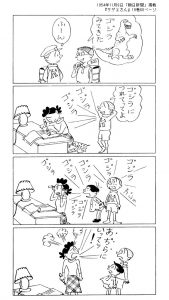
I mentioned that Miss Hasegawa received an award for her comic strip. In fact, there are a number of awards given to comic art, where we only have the Alley Awards from the Academy of Comic-Book Fans and Collectors. The Bungeishunjuu Manga Award was given to Miss Hasegawa, but you've already heard some names here of other award winning creators including Mr. Tezuka and Mr. Ishinomori, who is this year's award winner of the Kodansha Children's Manga Award for his story we saw up above, Cyborg 009.
Popular Japanese Comics
Some of the animated series we talked about in our Journey Show, are also popular manga stories.
Jungle Emperor Leo, which has that amazing full-color animation, is another series by Mr Tezuka. Notably, this story is very pro-nature and anti-technological development, a theme you can find in many of his works. Also notable in a story for children, the complexities and harsh realities of adult life aren't hidden away from young eyes. The world Leo exists in is cruel – and the law of man is much crueler than the laws of nature.
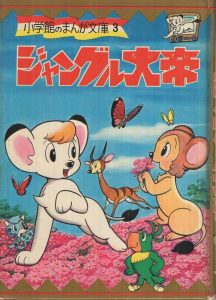
Mr. Tezuka is also writing comics for other series we talked about in the show, like Big X, Wonder 3 and the above-mentioned Princess Knight. These all run in different magazines!
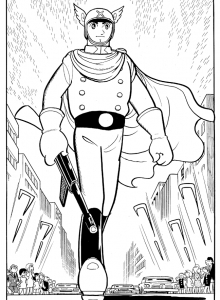
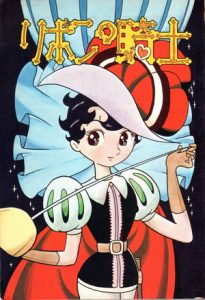
Not everything is so serious in manga, though. Magical girls are a new trend that is very fun. We have Bewitched on our TVs (and you might not be aware of this, but it is a comic book, as well) and Japanese comics fans have The Secrets of Miss Akko. Where Samantha wiggles her nose to make magic, Miss Akko uses a magical mirror. Girls all over Japan love this series and I expect we'll be seeing many more like it.

In the beginning I mentioned that we probably think of Batman or Superman when we think of comic books today. Well, the Japanese manga fan can also enjoy a Batmanga of their very own. But don't tell DC! I'm not sure they have permission.
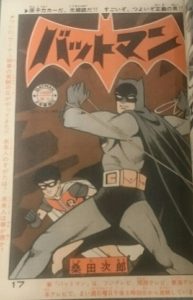
The Future of Japanese Comic
Even as TV continues to gain in popularity and more animation appears, I think we won't see a slowdown in manga for a long while. And remember, those children who grew up reading comics are likely to become the manga artists of the future. It will be very interesting to tune back in five years and see what's hip and new in manga in Japan.

![[April 6, 1966] Say Konnichwa to the Newest Comics from Japan!](https://galacticjourney.org/wp-content/uploads/2021/04/660406Nakayoshi-1966.jpg)
